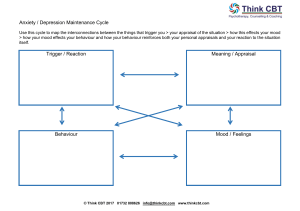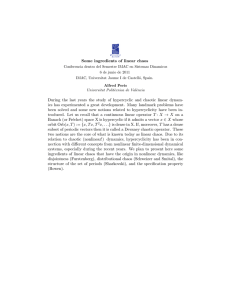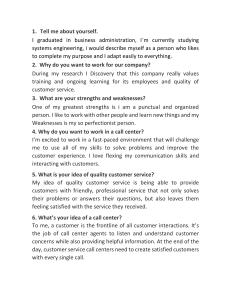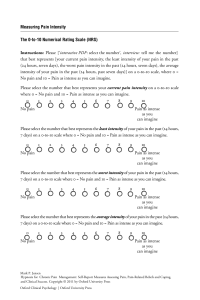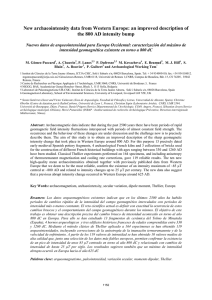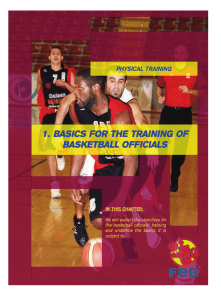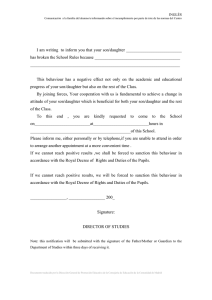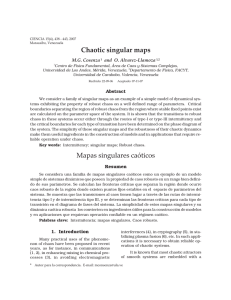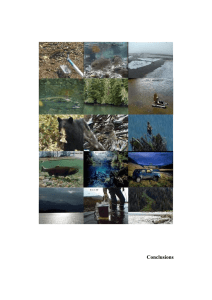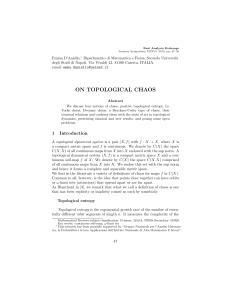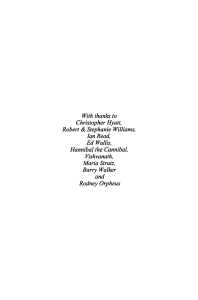Low Arousal Approach: Managing Confrontational Kids
Anuncio
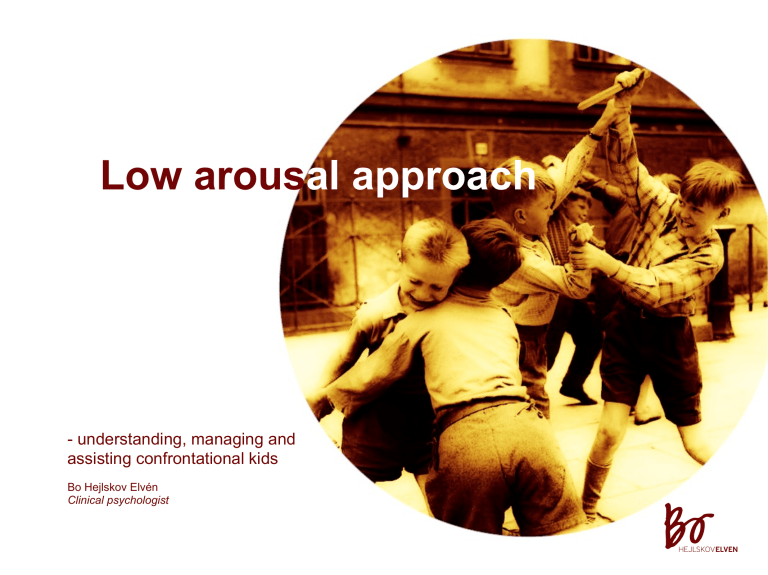
Low arousal approach - understanding, managing and assisting confrontational kids Bo Hejlskov Elvén Clinical psychologist Plato, born 422 BC Plato thought that children are savages that must be tamed and disciplined Others that have supported that view are Augustin and Calvin Aristotle, born 389 BC Aristotle thought that children are immature adults who need nurturing and support in order to grow into good adults This view is the base of developmental psychology and is supported by neuropsychological and behaviour genetic research And is beautifully operationalised Freinet’s thinking McGregor 1960 McGregor described in 1960 two core beliefs about staff that colours our management - X - that staff are lazy and needs to be motivated, controlled and monitored - Y - that staff are autonomous doing their best according to their prerequisites Change of perspective Ross Greene talks about a change of perspective Greene thinks it’s a matter of core beliefs - Do we believe that the child is doing it on purpose? - Or is doing his or her best? Change of perspective We might not know exactly what this change of perspective is But we know exactly when it happens - 20 years ago a diagnosis did it There might be other factors Attribution is probably a big part of it The parking attendant Attributional theory example If you get a parking ticket you have two possible thoughts - I put the car in the wrong spot. That was stupid - The parking attendant is an idiot - The last thought doesn't make you choose another spot tomorrow - And you will get a new parking ticket - Which confirms your opinion: They are idiots - And you do not learn anything Kids do well if they can (Ross W. Greene) Or he or she cannot live up to our demands or expectations regarding - Understanding the consequences of one's own behaviour - Flexibility - Endurance - Impulse control - Social abilities - Etc Affect Regulation When the demands are too high we use solutions and strategies - Refusing Affect Regulation Affect intensity Chaos No control Self control Affect trigger Time Affect Regulation No control Affect intensity Self control Affect trigger Time Affect Regulation Affect intensity Chaos No control Self control Affect trigger Time Affect Regulation Affect intensity Kaos No control Self control Affect trigger Time Affect Regulation Strategies - Refusing - Lying Affect intensity Kaos No control Self control Affect trigger Time Affect Regulation Affect intensity Kaos Affect trigger Time Strategies - Refusing Lying Running away Hitting Self harm No control Threats Self control Bad names Moral pop-out effect Ana Gantmans research tells us that we process moral information faster than other information This means that we have a tendency to view behaviour through a moral filter Moral pop-out effect That’s why we often fail to see the strategy for keeping self control But view challenging behaviour as immoral behaviour Judging behaviour instead of understanding it Maybe the change of perspective is starting to suppress the moral pop out effect Making it a cognitive process and thereby affected by stress Tools The basic rule: 1. Manage best you can without escalating the situation 2. Evaluate 3. Change what needs to be changed so that it doesn't happen again Tools The basic rule: 1. Manage best you can without escalating the situation 2. Evaluate 3. Change what needs to be changed so that it doesn't happen again Affect Contagion Affect is contagious we feel other's affects Using mirror neuron systems Mirroring muscle tension Method: Low arousal approach Affect intensity Chaos No control Self control Affect trigger Time Low Arousal Approach Keep calm Avoid dominating eye contact Calm voice with no jaw tension Divert attention Low Arousal Approach Keep the distance - When the student steps backwards you step backwards as well - Step backwards in demand situations Low Arousal Approach Do not stand opposite Low Arousal Approach Do not stand opposite A little on the side is better Low Arousal Approach Sit down when the child is agitated Avoid a marked body language Pretend to be walking home from the pub Avoid being infected by the child’s tension Make sure your calm is contagious Method: Chaos Affect intensity Chaos No control Self control Affect trigger Time Low Arousal Approach - When In Chaos Wait- it is often enough Make other kids leave Avoid touching with tense muscles Relax when somebody grabs you Low Arousal Approach - When In Chaos And in emergency situations when you need to grab someone - Use the child's own movement instead of restraint - Let go after a few seconds Metod: Deescalation Affect intensity Chaos No control Self control Affect trigger Tid Low Arousal Approach Stay calm Wait Clean up the mess Divert onwards Metod: Calm again Affect intensity Chaos No control Self control Affect trigger Tid Tools The basic rule: 1. Manage best you can without escalating the situation 2. Evaluate 3. Change what needs to be changed so that it doesn't happen again Affect intensity Calm phase - What were happening just before the crises? - What did we expect the child to be able to? - Did the child fail to live up to our expectations Chaos because of a lack of supporting structures? No control Affect trigger - Did our behaviour triggerSelf thecontrol crises? - How can we make sure it won't happen again? Affect intensity Escalation phase - What strategies did the child use? - Were they OK? - Did the child have any chances of calming down on his own? - Did we cause the escalation by using Chaos strategies that were counter productive? No control - Did we raise the demand level? - Did Affect we trigger use deescalation strategies? Self control - How was our body language and use of voice? - Did we use diversions in order to deescalate? Chaos phase Affect intensity - Was there immediate danger? - If there was: - Did we manage theChaos situation without escalating it further? Affect trigger wasn't: - If there - Were we able to resist intervening? - Was our behaviour shortening or prolonging the crises? No control Self control Affect intensity Deescalation phase - Did we manage to secure calm and space enough for the child to calm Chaos down? - Or did we make the situation escalate once again? Affect trigger No control Self control Affect intensity Calm again - Evaluating which structures and routines that need changing in orderChaos to avoid a next time - Do we have an action plan for the next time it happens anyway? Affect trigger No control Self control Identify -Lagging skills -Unsolved problems See how to use it at www.livesinthebalance.org Tools The basic rule: 1. Manage best you can without escalating the situation 2. Evaluate 3. Change what needs to be changed so that it doesn't happen again www.hejlskov.se
